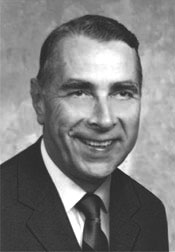Charles E. Supper Instrumentation Award
 To recognize scientists who have made exceptional contributions to crystallographic instrumentation. Charles Supper emigrated from Germany to the United States in 1925, bringing an ability to fabricate almost anything mechanical. While at M.I.T. during the late 1930s, he collaborated with Martin Buerger in the development of the precession camera. This instrument was to become the most significant single-crystal camera of the second half of the century. By 1941, he recognized the need for a company to manufacture and supply high quality, easy-to-use, reasonably-priced instruments for the X-ray crystallographer and he founded the Charles Supper Company. Mr. Supper’s innovative designs and methods led to the commercial availability of the Buerger precession cameras, the Weissenberg camera, Debye-Scherrer powder cameras, goniometer heads, devices to fabricate crystal and protein models, film measuring instruments and other useful diffraction accessories. In the mid 1960s, the firm also became a major distributor for various crystallographic products created by others. The Supper Award is given periodically and consists of an honorarium to present a lecture at the Annual ACA Meeting. The Charles Supper fund was established by his son, Lee, in appreciation to the community of X-ray diffraction scientists for their continued support throughout the years. This is a non-annual award and is given at the discretion of the ACA Council. To recognize scientists who have made exceptional contributions to crystallographic instrumentation. Charles Supper emigrated from Germany to the United States in 1925, bringing an ability to fabricate almost anything mechanical. While at M.I.T. during the late 1930s, he collaborated with Martin Buerger in the development of the precession camera. This instrument was to become the most significant single-crystal camera of the second half of the century. By 1941, he recognized the need for a company to manufacture and supply high quality, easy-to-use, reasonably-priced instruments for the X-ray crystallographer and he founded the Charles Supper Company. Mr. Supper’s innovative designs and methods led to the commercial availability of the Buerger precession cameras, the Weissenberg camera, Debye-Scherrer powder cameras, goniometer heads, devices to fabricate crystal and protein models, film measuring instruments and other useful diffraction accessories. In the mid 1960s, the firm also became a major distributor for various crystallographic products created by others. The Supper Award is given periodically and consists of an honorarium to present a lecture at the Annual ACA Meeting. The Charles Supper fund was established by his son, Lee, in appreciation to the community of X-ray diffraction scientists for their continued support throughout the years. This is a non-annual award and is given at the discretion of the ACA Council.
History of ACA Supper Award Winners:
|